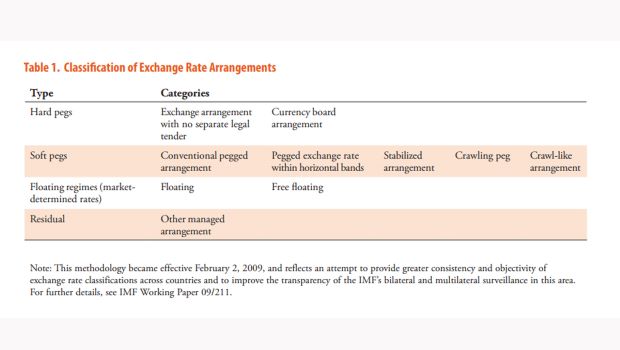COLOMBO – Sri Lanka’s exchange rate arrangement involving ad hoc interventions, which has so far remained stable and provided a strong foundation for economic activities to resume amid broadly deflationary monetary policy, has been classified as ‘other managed’ by the International Monetary Fund (IMF).
Especially after 1978, when the IMF’s Second Amendment to its Articles deprived members of a credible anchor for money, countries ended up with various exchange rate arrangements, which collapsed due to conflicting money and exchange policies, triggering high inflation, social unrest and political upheavals.
“The de jure exchange rate arrangement is classified as free-floating, while the de facto exchange rate arrangement is classified as other managed,” the IMF said in its last economic report.
The de jure arrangement is usually the one that is conveyed to the Fund by the authorities of a country. The de facto regime is what IMF staff observes it to be usually after watching how a currency behaves for six months or more.
A free-floating central bank does not intervene in the market and build foreign reserves, or lose them or sterilize in either direction.
Sri Lanka now has a reserve target under an IMF program so the rupee cannot free float. The central bank must intervene in the forex markets in some kind of pegging operation to buy dollars, with new (printed) rupees.
The point or points at which interventions are made by an IMF-prone central bank in a country with monetary instability or a soft-peg is a source of puzzlement to outsiders who suffer high inflation and currency depreciation as they try to discover a consistent rule.
-economynext.com



Comments are closed, but trackbacks and pingbacks are open.